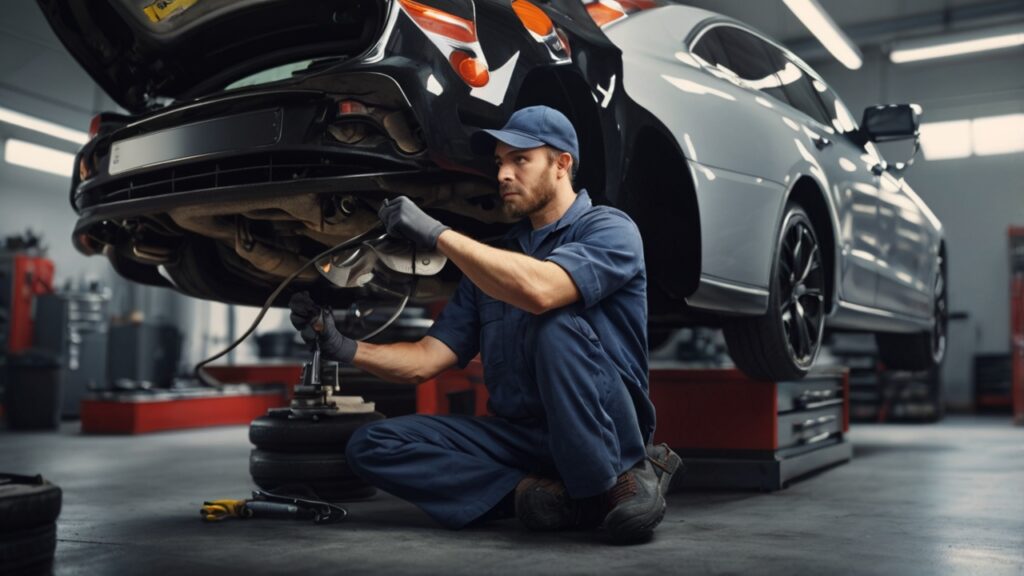Choosing between aftermarket vs OEM exhaust parts isn’t just about saving a few bucks—it can decide whether your car runs smooth or keeps draining your wallet with endless repairs. I’ve seen drivers struggle with this decision in real life, from my uncle’s Honda Civic project to a friend’s Jeep Wrangler that turned into a money pit. And the same question always pops up: “Are aftermarket exhausts reliable?”
Honestly, it’s not a simple yes or no. Some aftermarket brands deliver excellent performance and durability, while others fall apart in less than a year. OEM exhaust parts, on the other hand, are considered the “safe” bet, but they aren’t cheap. This mix of price, quality, and performance creates confusion, and that’s exactly what we’re breaking down here.
In this guide, you’ll discover the real pros and cons of OEM vs aftermarket exhaust systems, how to spot the signs your exhaust may need urgent repair, and even how to perform a basic at-home inspection. By the end, you’ll know how to choose reliable exhaust parts for your car without feeling ripped off. And yes, I’ll also share some personal stories and expert opinions that make this less of a lecture and more like chatting with a trusted mechanic friend.
OEM Exhaust Parts: Why They’re Considered the “Safe” Choice
OEM stands for Original Equipment Manufacturer, which basically means the part was made by the same company that built your car. Think of it as the factory-standard version.
OEM exhaust benefits are clear:
- They’re designed to fit your car perfectly, no modification required.
- Reliability is generally higher because it meets factory testing standards.
- Warranty coverage usually applies, which can give peace of mind.
But here’s the catch: OEM parts are often very expensive. A friend of mine had to replace a muffler on his Toyota Camry, and the OEM part alone was almost the same price as his monthly rent. That’s painful.
Still, OEM is worth considering if you don’t want surprises. Some professional mechanics even say: “If you’re planning to keep the car for 10 years, stick to OEM.” It’s a conservative but trusted approach.
Aftermarket Exhaust Parts: The Wild West of Car Mods
Aftermarket exhausts are produced by third-party manufacturers. They’re usually cheaper, and the range is enormous—from no-name brands that cut corners to the best aftermarket exhaust brands like Borla, MagnaFlow, or Flowmaster.
Here’s where things get tricky: Are aftermarket exhausts reliable? The answer depends on who made it.
Pros of aftermarket exhausts:
- Lower prices than OEM, sometimes half the cost.
- Wider selection: performance-focused, louder sound, or even eco-friendly options.
- Potential for improved horsepower or fuel efficiency if you pick the right one.
Cons of aftermarket exhausts:
- Fitment issues—sometimes welding or extra work is needed.
- Durability can be questionable, especially with budget brands.
- No guarantee that it won’t mess with emissions compliance in your state.
I once installed a cheap aftermarket muffler on my first car (a beat-up Corolla). It sounded aggressive for a while but rusted through in less than a year. That’s the risk. On the flip side, another buddy’s Borla exhaust on his Mustang has lasted nearly a decade with zero issues.
That’s why experts often advise: “Aftermarket is fine, just don’t cheap out on the brand.”
Signs That Your Exhaust System Needs Immediate Attention
Sometimes, drivers wait too long to address exhaust problems, and that’s where the bills pile up. You don’t want to wait until you’re paying for the most expensive exhaust system repairs (like replacing a catalytic converter).
Warning signs include:
- A loud rumbling or hissing noise under your car.
- Noticeable drop in fuel efficiency.
- Strong smell of exhaust fumes inside the cabin.
- Rust or holes visible during inspection.
Ignoring these is risky. I’ve seen cases where a small crack in the exhaust pipe led to a clogged catalytic converter, which nearly destroyed the engine. (There’s a detailed breakdown of how a clogged exhaust part can silently kill performance in this guide here).
How to Perform a Simple Exhaust Inspection at Home
You don’t always need to be an expert mechanic to check your exhaust. With a flashlight and a bit of patience, you can:
- Look under the car for rust spots, holes, or broken hangers.
- Start the engine and listen for unusual rattling or hissing.
- Check around joints where pipes connect for leaks.
If you notice something off, consult a professional right away. Sometimes a trusted repair shop like the exhaust system experts in North Carolina can give you a free inspection, which is worth it for peace of mind.
Choosing Between Aftermarket vs OEM Exhaust Parts
Here’s my honest advice:
- Go OEM if your car is relatively new, you want guaranteed fit, or you’re not into experimenting.
- Go aftermarket if you’re looking for performance upgrades, don’t mind small adjustments, or want to save money.
But whichever you choose, make sure the seller is trusted, reliable, and professional. Check reviews, confirm warranties, and don’t get swayed by the lowest price. A “cheap” decision today can easily become the most costly repair tomorrow.
A Real-Life Case Study
One of the most convincing examples I’ve seen was from a neighbor with a Dodge Charger. He replaced his stock exhaust with a budget aftermarket kit. Within six months, the welds broke, creating a dangerous leak. He then upgraded to a MagnaFlow system (still aftermarket, but from a best aftermarket exhaust brand) and has had no issues for over five years. His story is a reminder: not all aftermarket is bad, but not all is good either.
Future Blog Development Ideas
While this article covers how to choose reliable exhaust parts for your car, there’s a lot more to explore. Topics like how to prevent exhaust rust in humid climates, or whether high-performance headers are worth it for daily drivers, deserve deeper discussion. Another interesting angle is looking at the environmental impact of aftermarket vs OEM exhaust choices, especially since emissions regulations are tightening.
And for DIY lovers, guides on essential tools for safe exhaust replacement at home or how to weld small exhaust cracks without replacing the whole system can be incredibly valuable. You’ll find more of these evolving topics inside the exhaust system resource hub.
FAQs
1. Are aftermarket exhausts reliable for daily driving?
Yes, if you stick with a reputable brand. Budget aftermarket exhausts may save money upfront but often lead to faster wear and more repairs.
2. Do OEM exhaust parts last longer than aftermarket?
Generally, yes. OEM parts are tested to factory standards, while aftermarket varies widely. High-end aftermarket brands, however, can match or exceed OEM in durability.
3. How do I know if my car needs a new exhaust?
Listen for unusual noises, watch for declining fuel economy, and check for visible rust or leaks. If unsure, get a professional inspection.
Final Thoughts
At the end of the day, the aftermarket vs OEM exhaust parts debate boils down to your budget, your car’s purpose, and how much risk you’re willing to take. I’ve personally gone both routes, and while I’ve had regrets with cheap parts, I’ve also experienced the thrill of a great aftermarket upgrade.
If you found this article helpful, please share it on your social media using the buttons below—it helps other drivers make smarter, more reliable decisions for their cars. And if you want expert guidance straight from professionals, don’t forget to check out Pro Service Tips for more advice.



